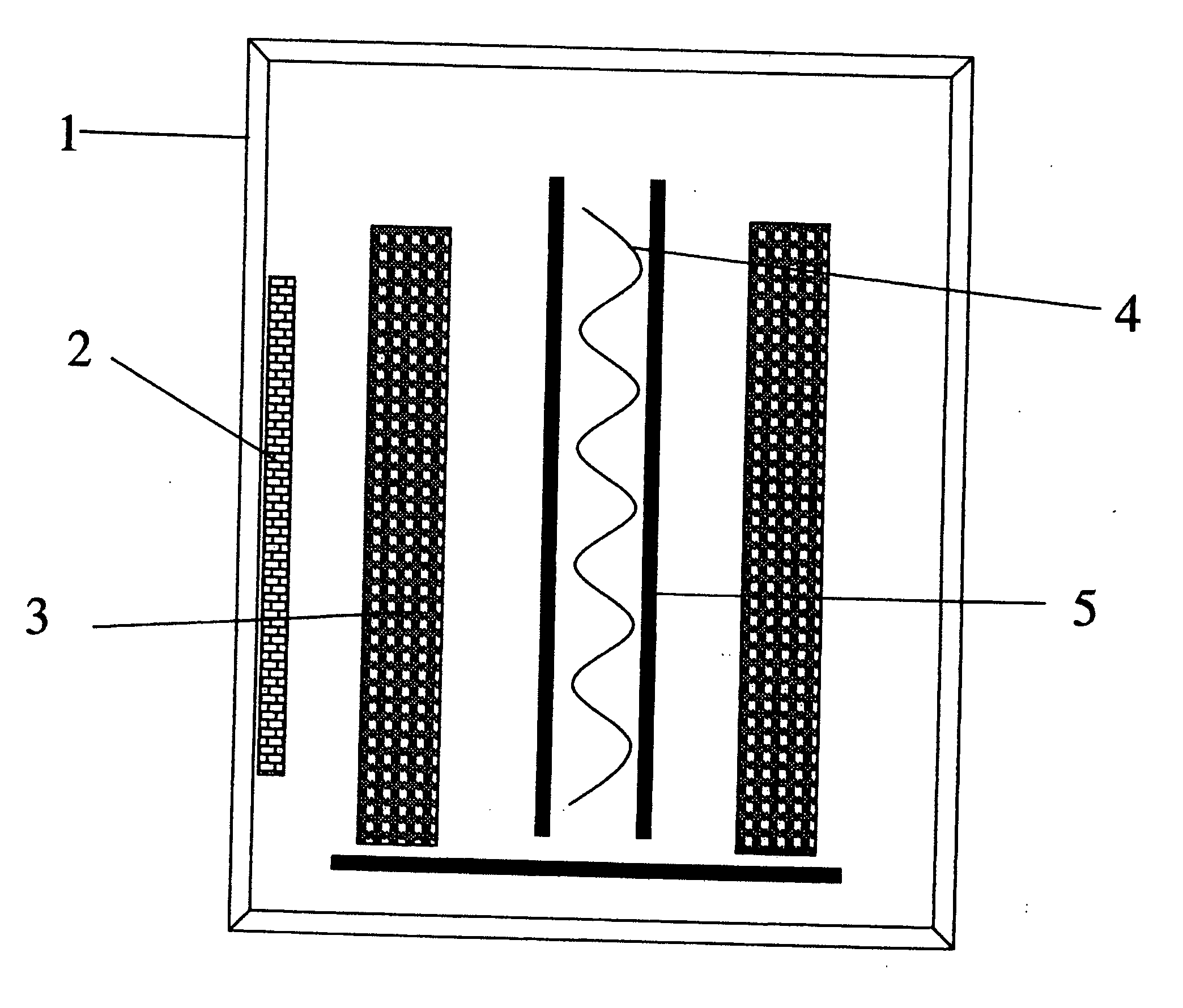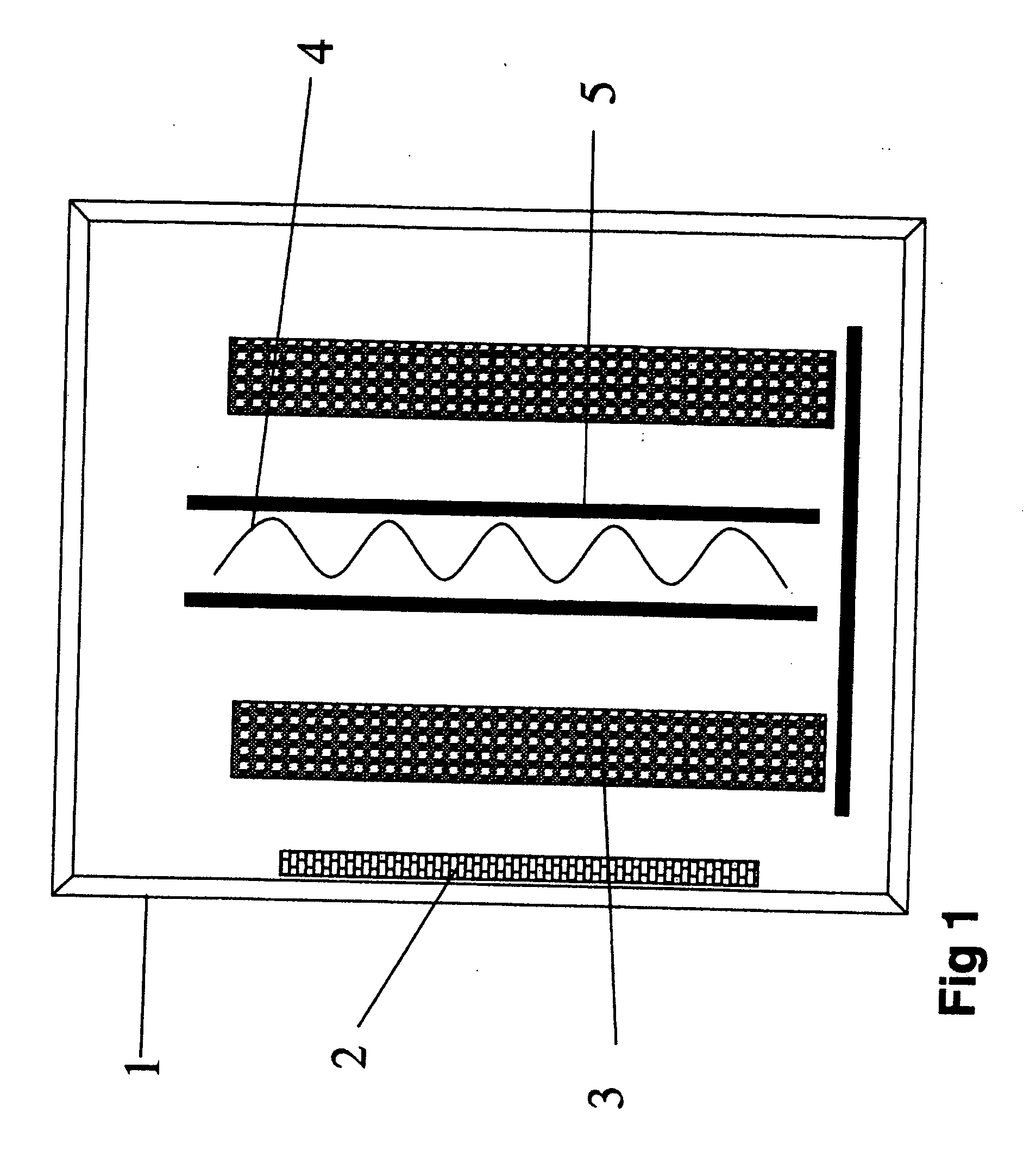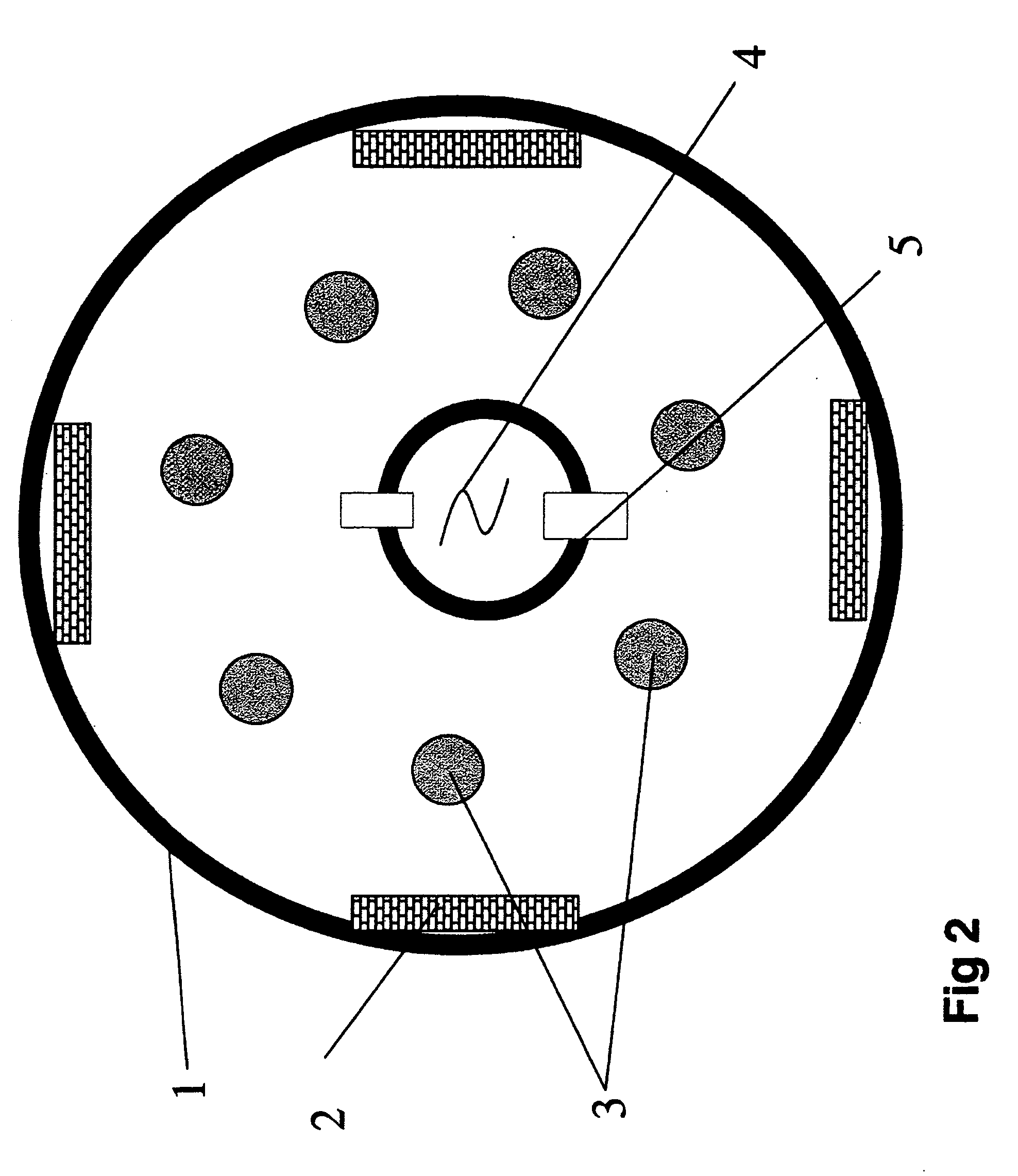Device for improving plasma activity PVD-reactors
a technology of plasma activity and reactor, which is applied in the direction of electrolysis components, vacuum evaporation coatings, coatings, etc., can solve the problems of risky impact damage to substrates, and achieve the effects of improving plasma activity, increasing plasma intensity, and keeping the technology simpl
- Summary
- Abstract
- Description
- Claims
- Application Information
AI Technical Summary
Benefits of technology
Problems solved by technology
Method used
Image
Examples
example 1
Prior Art
[0028] Sputter etching of cemented carbide cutting inserts was performed according to the system described in WO 97 / 22988. A plasma was ignited at a moderate pressure of 0.8 Pa and a substrate-target voltage of 800 V, which was the minimum voltage to operate the etching. A current flowing through the substrates of 2 A was achieved. This substrate current was limited by the ion density resulting from using a magnetron as counter electrode. The current was, furthermore, related to the impact by charged ions and was thus a measure of the etch. The substrates showed after this sputter-etching procedure signs of redeposition on shadowed surfaces. The voltage necessary to operate the discharge was high enough to risk impact damage to the substrates.
example 2
Invention
[0029] Example 1 was repeated utilizing the system as described above but with the addition of a centrally situated hot W-filament, as indicated in FIG. 2. By heating the filament with 11 A and applying a voltage of 360 V between the filament (cathode) and the reactor wall (anode), etching was achieved at 0.2 Pa. With a substrate—Ti-counter electrodes (magnetron sources) voltage of 200 V, a substrate current of 7 A was measured. This voltage was not the minimum etching voltage necessary but selected as appropriate. The substrates were clearly more and deeper etched and showed no signs of redeposition, not even on highly shadowed areas.
[0030] Thus, when etching according to the present invention a more efficient etch was obtained, at a lower substrate voltage which implies less impact damage and at a lower pressure thus eliminating redeposition.
example 3
[0031] The inserts from Examples 1 and 2 were, immediately following the etch, coated with a 1.6 μm thick layer of Al2O3 using a standard deposition process: DMS using two pairs of magnetrons equipped with Al targets. A background pressure of 0.23 Pa Ar was maintained for the sputtering gas discharges which were run at 40 kW each. Oxygen reactive gas was fed at 2×30 sccm and controlled by an optical emission feedback circuit. This resulted in crystalline alumina layers. The two sets of inserts were evaluated in a turning test in stainless steel, with the object to determine the adhesion of the coatings. The results indicated that the inserts etched according to prior art technology exhibited extensive flaking while the inserts etched according to the invention showed less flaking and less indications of wear.
PUM
| Property | Measurement | Unit |
|---|---|---|
| Plasma power | aaaaa | aaaaa |
Abstract
Description
Claims
Application Information
 Login to View More
Login to View More - R&D
- Intellectual Property
- Life Sciences
- Materials
- Tech Scout
- Unparalleled Data Quality
- Higher Quality Content
- 60% Fewer Hallucinations
Browse by: Latest US Patents, China's latest patents, Technical Efficacy Thesaurus, Application Domain, Technology Topic, Popular Technical Reports.
© 2025 PatSnap. All rights reserved.Legal|Privacy policy|Modern Slavery Act Transparency Statement|Sitemap|About US| Contact US: help@patsnap.com



